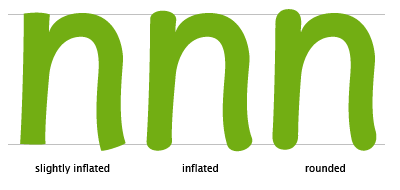Comic Sans was first issued in 1995 as a screen-font for MS applications like Comic Chat and 3d movie maker. It was also added to the Windows '95 package for Internet Explorer (which is why it is one of the very few standard Internet fonts) and on Word. It was clearly a child of the popular digital explosion at the time.
Since then, computers have become a very important aspect of our daily lives. To
read* how people loved Comic Sans as part of the revolution, I find truly moving.
This is something that 'better' typography will never be able to replace; the same goes for 'better' graphic design. The emotional, associative power of type or design will always surpass the qualitative power of type or design.
More so than in any other craft, art or discipline, this is vital to graphic design, because it is so substantially present in our daily lives, yet rarely perceived as being a 'creation' by one or more human beings.
So does 'quality' not really matter, if associative power is so important? — It seems harsh to respond positively to such a question, but there is some truth in there.
I think the creative quality of a piece of graphic design exists. But very important is that it also lies within the designer's power to decide what he or she wants to associate with that quality. We have the power to give new (and old) associations to new projects, products, ideas, messages, people etc. The true 'quality' in graphic design lies in the 'quality' of those new projects, ideas, etc. albeit practical, commercial, emotional, moral or philosophical.
Graphic designers have a technical and creative job to do. But I think it is much more important that they understand the context, the range of associations they are working in and for.
*
This may be the pdf-document the thread on Comic Chat mentioned above refers to, the original link no longer works.
Also read
Piet Schreuders on the importance of quoting in design





